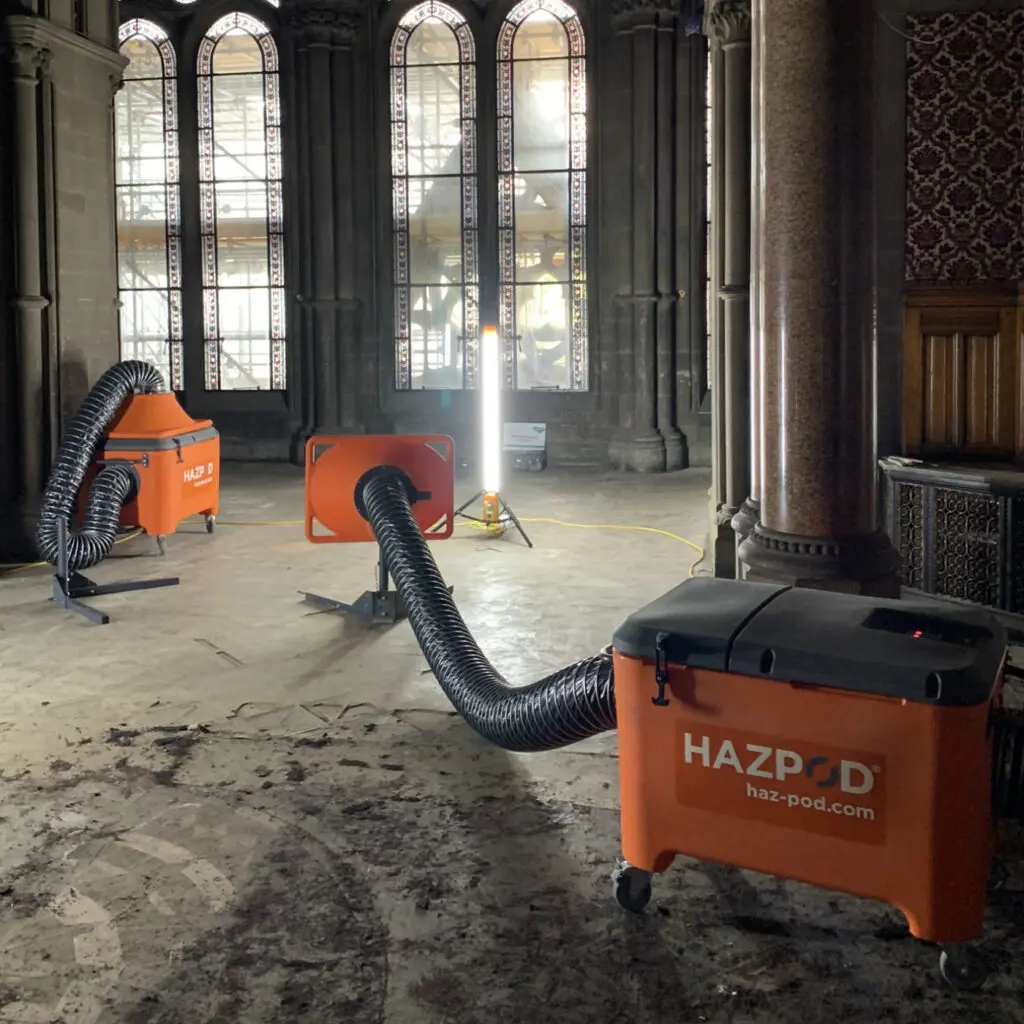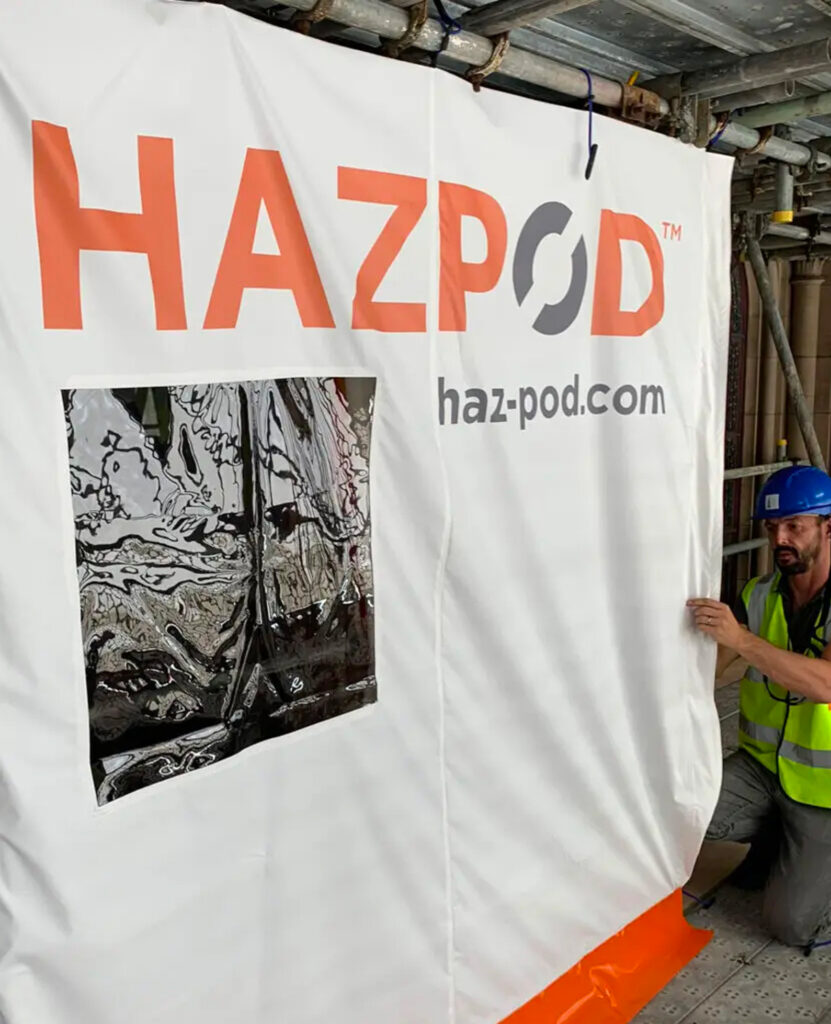Dust created during construction and restoration works has always been a critical issue. HSE figures for 2017 suggest that 18,000 new cases of work-related respiratory disease were diagnosed and a significant proportion of these were as a result of exposure to respirable crystalline silica (RCS). Furthermore, the cancer burden study estimates that there are over 600 lung cancer deaths associated with RCS each year and 450 of those deaths have been directly linked to the construction sector.

Stonemasonry can generate high airborne dust levels, with research indicating that grinding and cutting sandstone can produce RCS levels of up to 0.7 mg/m3. As RCS has a workplace exposure limit (WEL) of 0.1 mg/m3, expressed as an 8-hour time-weighted average, one can easily see that employees and employers face significant challenges when managing these risks.
Stone Edge North Ltd (SEN) have utilised an innovative dust and fume risk management system ‘HAZPOD’, whilst conducting extensive internal and external renovation works on the prestigious Manchester Town Hall restoration project.
The work conducted would unavoidably produce large quantities of dust as the original lime plasters and external stone sections had to be removed and replaced. The SEN management team were keen to find a highly portable and effective system that would not only protect their own employees but would prevent any dust migration throughout the entire site, therefore, increasing the safety of all contractors.
The HAZPOD system has been designed by healthcare and construction experts and was borne out of the necessity to have a system on-site that could effectively reduce the risk of occupational lung disease in the most challenging of environments.
The system is designed and manufactured in the North West, thus allowing the SEN and HAZPOD teams to work closely together to provide innovative and bespoke solutions to ensure that the risk of airborne hazards is kept to an absolute minimum if not eradicated entirely.


As the primary HAZPOD unit is highly portable, the SEN team could ensure effective dust and fume management in areas where the deployment of similar systems would prove extremely challenging.
This was particularly the case during extensive stone-working on the external scaffold. The ability to filter dust and fume to HEPA levels and create negative pressure compartments using the EZIPOD Scaffold enclosure proved invaluable in preventing dust migration throughout the entire site.
The resulting partnership of the HAZPOD and SEN teams provided a unique opportunity for CPD opportunities, increased innovation, and improved risk management, ultimately leading to a safer working environment for everyone.